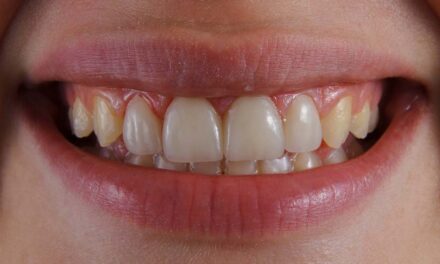Eating healthy, nutritious foods is the key to a healthy digestive system. It’s also very important to consider how we chew and break down food for proper digestion. The first step of digestion starts in your mouth. Teeth help break down foods and saliva has enzymes by which the digestive process starts. As you swallow food, muscles move it through the digestive tract. Food then is broken down and absorbed of nutrients needed by your body for health and development.
Function of Teeth in Digestion
Adults should have 32 teeth, four of which are the wisdom teeth. These four wisdom teeth might not develop at all or may be pulled at anytime due to lack of space or other reasons. There are different sets of teeth and each set has a particular function. Teeth may be considered organs of chewing (mastication) and serve a very important function of the digestive process. Chewing food properly gives the signal to saliva to aid in the break down of certain carbohydrates.
The parts of the teeth that are visible are called crowns. The structure of the outer layer of the crown of teeth consists of a hard outer surface called enamel. This is the hardest substance in the human body.
- Molars have a large surface with pits and grooves that make them suitable for grinding food between opposing upper and lower molars. There are two molars in each of the four arches of the mouth. Molars are the last teeth in the mouth of each quadrant. There are actually three molars on each side, with the “3rd molar” being the wisdom tooth.
- Incisors, or the front teeth consist of sharp edges that are made for cutting food. There are six upper and six lower incisors. At the corner of each set of front teeth are the canines. These have long roots and are designed to tear food. The incisor teeth cut food and push it to the back teeth (molars and premolars) with the help of the tongue. The back teeth actually aid in the chewing and breaking down of food with their surfaces.
- Premolars are smaller than molars and help with the chewing process by crushing food. There are also two premolars in each quadrant of the mouth and they are situated in-between the molars and incisors.
How Saliva Starts the Digestive Process
When you eat food, it’s first mixed with saliva that is secreted by sets of glands. The three main salivary glands are the parotid, sub-mandibular and sublingual glands.
Parotid glands are located at the side of the face on the inside of your cheeks. They have an opening where the secretion occurs, called Stensen’s duct. It’s the largest of the salivary glands that helps with mastication and swallowing mostly of starches.
Submandibular glands are located on the inner side of the lower jawbone. This gland produces amylase to break down starches and mucous cells to help lubricate the throat.
Sublingual glands are located beneath the tongue. They produce mucin that helps promote the production of saliva. Most of saliva is produced during waking hours, and decreases while you sleep. If you wake up with dry mouth and morning breath, the reason is due to lower saliva production helping your oral hygiene. The sublingual glands function to help lubricate and bind food, which is needed for easy swallowing. Without adequate saliva with resulting dry mouth, swallowing can become difficult and increase the risk of choking as food gets lodged in the throat.
You Need Healthy Teeth to Chew And Digest Food
Anyone who has experienced a toothache knows it’s difficult to eat if you have pain. Misalignment, infection and missing teeth can all affect proper chewing, breakdown of foods and therefore, proper digestion.
Misaligned Teeth
The teeth are said to be in occlusion when they fit together ideally. That is, the upper fit slightly over the lower teeth and the cusp tips (pointy surfaces) of the molars fit the grooves of the opposing molars. Proper occlusion keeps the cheeks and lips from being bitten and the lower teeth protect the tongue and keep it in place.
If your teeth do not align ideally you have malocclusion. Heredity, poor childhood habits, such as thumb sucking, tongue thrusting, prolonged use of pacifier or bottle can be some of the causes of malocclusion.
Malocclusion may also have been the result of an injury or fracture of the jaw. Tumors can also cause malocclusion. Other causes can include ill-fitting dental fillings, crowns, and dentures.
Not replacing missing teeth in a timely fashion, can cause surrounding teeth to shift, bringing about misalignment of teeth. This malocclusion cannot only affect your appearance but also difficulty in biting or chewing foods. Misalignment of teeth cannot be underestimated and should be corrected.
Prevention
Your ability to chew your food properly is just as important as the quality of the food you eat. The American Dental Association (ADA) recommends proper daily oral hygiene as the number one way to keep your teeth healthy. Flossing and brushing are the main tools that are needed. Below are some tips on how to properly keep your mouth clean and healthy for a beautiful smile and healthy digestion.
Oral Hygiene 101
Brushing and flossing properly is very important. If you quickly run a toothbrush over your teeth three times a day and floss quickly without properly cleaning under the gums, germs continue to cause harm to your teeth with resulting tooth decay, gum disease and even worse, lead to loose teeth. Ask your dental professional how to floss properly. But in summary, hold a small part of the floss between your fingers, and wrap the floss around each side of the tooth and gently extend it under your gums. Slow up and down movements will clean these areas that a toothbrush cannot reach. Use a clean piece of floss for each tooth. Floss first to release food and plaque stuck under the gums and between the teeth, and follow with brushing and rinsing.
Make sure to brush your gums as well as every side of every tooth. If you can’t brush after every meal, rinse with water or chew xylitol chewing gum. Brushing and flossing at night is crucial because saliva production slows down as you sleep, which means your mouth is more prone to attack by bacteria. Dry mouth can also be a problem and proper brushing and flossing can help prevent gum disease and tooth decay, which are typically more likely with reduced saliva.
Using effective toothpaste and mouthwash is very important. Baking soda toothpaste with xylitol is a good choice for toothpaste and mouthwash. The benefits of baking soda toothpaste are many including helping remove stains, to help make your teeth appear whiter.
Don’t think just because a product label says ‘natural toothpaste’ that it’s good for you. Many contain saccharin and/or sodium lauryl sulfate, which can actually cause dry mouth. For the best toothpaste and mouthwash use:
- Alcohol-free mouthwash—alcohol dries the mouth and changes the pH to what germs like. This is one reason drinking excessive alcoholic beverages is also bad for healthy mouth. Mouthwash with xylitol is excellent because it helps flow of saliva.
- Xylitol natural toothpaste and mouthwash—studies report xylitol has many benefits for a healthy mouth when used regularly in toothpaste, and especially in chewing gum. It helps promote saliva, which is good for dry mouth. It’s also been shown to help prevent tooth decay.
Take care of your teeth and gums with proper daily routine of brushing and flossing. Eat nutritious, healthy foods and your tummy will thank you.











